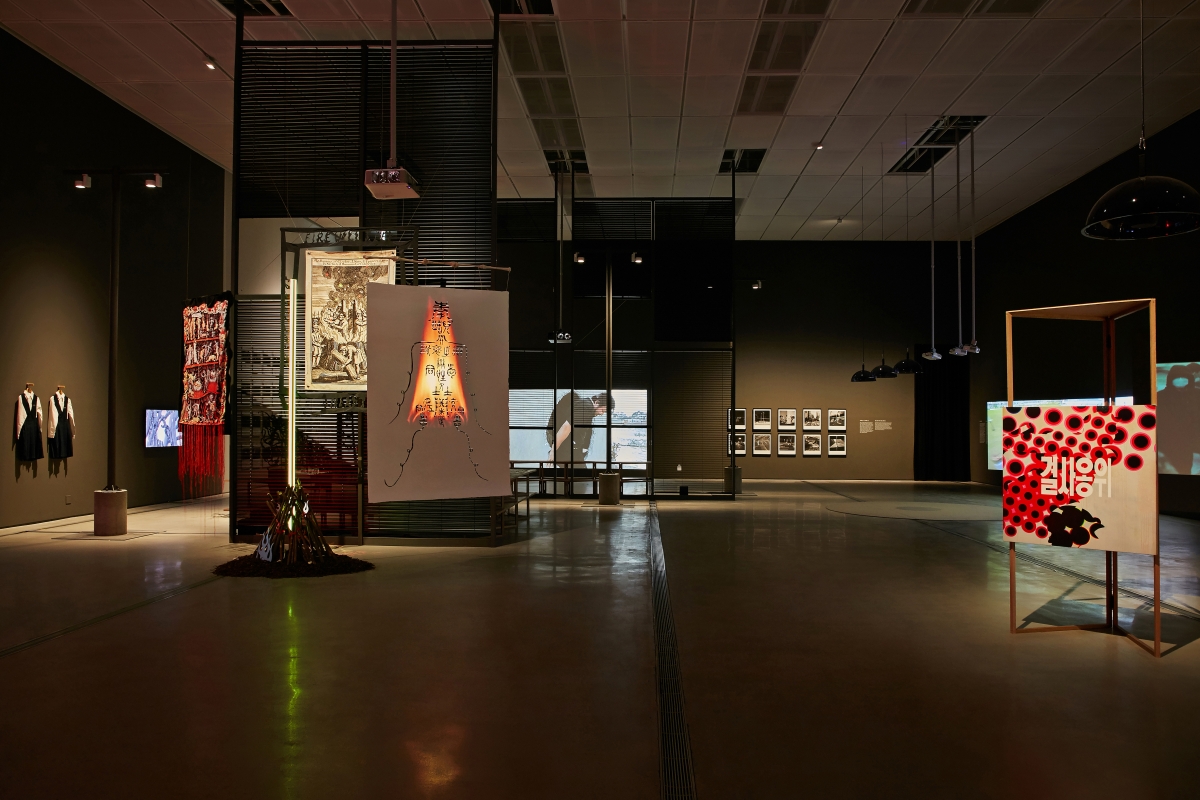The exhibition ‘Looking for Another Family’ currently on show at the National Museum of Modern and Contemporary Art, Seoul (MMCA) narrates the formation of a family that is bonded by social solidarity and not by blood. As a part of MMCA’s Asia Project, initiated in 2017 to secure a point of connection between Korean and Asian contemporary art, the exhibition hall was filled with examples that examine the power of solidarity in response to social problems. Fifteen teams of artists from eight different countries (such as Korea, China, Japan, Indonesia, the Philippines) explore the challenges and communalities experienced in Asian countries and their artworks, expressing the possibility of a solidarity that would go beyond national borders. The themes with which the artists contend can be broadly divided into the issues emerging from social attitudes to gender and the state oppression of individuals.
By building a lounge-style bookstore installation titled Imaginaries of the Future (2020), Lee Kangseung arranges the history of sexual minorities in Korea through publications, drawings, and video. Here, the artist has opened a platform to discuss queer identity with spectators and other artists, and o which drag artists are invited to perform. In his Kiss of Chaos (2020), Dew Kim exhibits a music video that criticises the social prejudices directed at gender identities and sexual minorities. He has built part of the set featured in the music video within the exhibition to allow the audience to spatially experience his perspective. Through a video and installation work titled FDSC News (2020), reminiscent of the news desk of a broadcasting company, Feminist Designer Social Club reports on a list of things that it did to improve the working conditions of female designers. Moreover, other featured artists use their installation works to express personal resistance against state oppression. In One Sound of the Futures (2016), Isaac Chong Wai imparts voices from Gwangju (Korea), Wuhan (China), and Hong Kong at the same time to express how democracy can continue to thrive in an autocratic system. The audience has to stand in alignment with the ceiling speakers that are placed in order, and this exhibition composition gives one the sensation of participating in an crowd of people as depicted in the video. By playing the video Structure Study I (2012) in the temporarily-created music hall, Ni Hao presents the image of two students playing plastic recorders twisted in a complex way as a critique of the imperialistic violence embedded within the educational system.
The exhibition offers a model for how individuals can connect and bond as a family in the sharing of their thoughts on identity and in the discussion of social issues for mutual consolation and societal improvement. Although these spaces were designed to occupy an exhibition context in which the audience would interact with the works and fellow spectators in a closed and intimate way, the artists and the organisers have expressed their disappointment at how their intentions were thwarted by the new rise in cases of COVID-19. The exhibition will be on display until Aug. 23.

Exhibition views of ‘Truths that Would be Maddening Without Love’ / Images courtesy of MMCA




